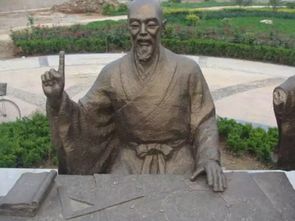Liu Bingzhong has been intelligent since childhood, and when he entered school at the age of eight, he could recite hundreds of words a day. At the age of thirteen, he served as a hostage in the Shuai Mansion, and at the age of seventeen he served as the envoy of the Xingtai Festival, so that he could raise his relatives nearby. Liu Bingzhong was often depressed and unhappy for Ling Shi, so he abandoned his official and lived in seclusion in the Wu'an Mountains. A few years later, he was accepted as an apprentice by the Zen master of Tianning Temple. Later, he traveled in the clouds and stayed in Nantang Temple.

Before yuan shizu ascended the throne, Master Haiyun was summoned, and when he passed through the clouds, he heard that Liu Bingzhong was erudite and talented, and invited him to accompany him. After Liu Bingzhong met with Yuan Shizu, Yuan Shizu praised him very much and inquired many times. Liu Bingzhong has a wide range of life experience, profound literary accomplishment, lofty ambitions and a free temperament. See the rich as a floating cloud, and the name of light work is like a dream.
Liu Bingzhong wrote many literary works in his lifetime, including six volumes of the "Collection of Tibetan Spring", twenty-two volumes of "Collected Poems", ten volumes of "Anthology", four volumes of "Pingsha Jade Ruler", and two volumes of "New Mirror of Jade History". In the spring of 1274 (the eleventh year of the Yuan Dynasty), Liu Bingzhong arrived at Yuan Shangdu (present-day northeast of Zhenglanqi, Inner Mongolia) with Kublai Khan, the ancestor of the Yuan Dynasty. He built a cottage in the suburb of Nanping Mountain, living alone in the forest, chanting poems and enjoying himself. In August of the same year, he died in a sitting position at the age of fifty-nine.
The name of the "Great Yuan" was formally established in November of the eighth year of the Yuan Dynasty (1271), when Kublai Khan followed Liu Bingzhong's advice. Liu Bingzhong believed that the achievements made by the Yuan Dynasty during this period were not available in the successive dynasties, and according to the meaning of the "Great Qianyuan" in the I Ching, "Dayuan" was taken as the new national name. In the Chinese cultural system, the name of the country is the most critical political and cultural symbol of a dynasty. The "Spring and Autumn Biography" said: "The king is ordained and the king will choose the beauty of the world to call himself." ”
This practice of naming dynasties from the perspective of literal meaning was continued, and the Ming and Qing dynasties continued this principle, and even the Republic of China and the People's Republic of China named country names from the perspective of literal meaning.
The connotation of "Yuan" is exactly in line with the Mongolian belief in "eternal life", conforms to Kublai Khan's strategic thinking that "those who respond to heaven are only sincere, and those who save the people are not profitable", which can be recognized by the Mongolian nation and conform to Liu Bingzhong's political strategy of "judging the past and the present".
Liu Bingzhong was the planner and designer of the Yuan Dynasty capital, the capital of the Yuan Dynasty, and laid the initial urban prototype of Beijing.
In 1256, Kublai Khan was still in his residence, but already had plans to dominate the Central Plains, and in order to march into the Central Plains, he asked Liu Bingzhong to design and build a city in the east of Huanzhou and the north of Luanshui. Liu Bingzhong spent 3 years to complete this work.
After the city was repaired, it was named Kaiping, and later promoted to Shangdu, where Kublai Khan ascended to the emperor's throne, and its ruins are 20 kilometers east of the zhenglan banner in present-day Inner Mongolia.
In the third year of the Yuan Dynasty (1266), Liu Bingzhong was ordered to design and build a new capital city in the northeast of the former Yanjing City, named Dadu, the predecessor of today's Beijing City. Construction began in 1267 and was not completed until 1285, which lasted 18 years.